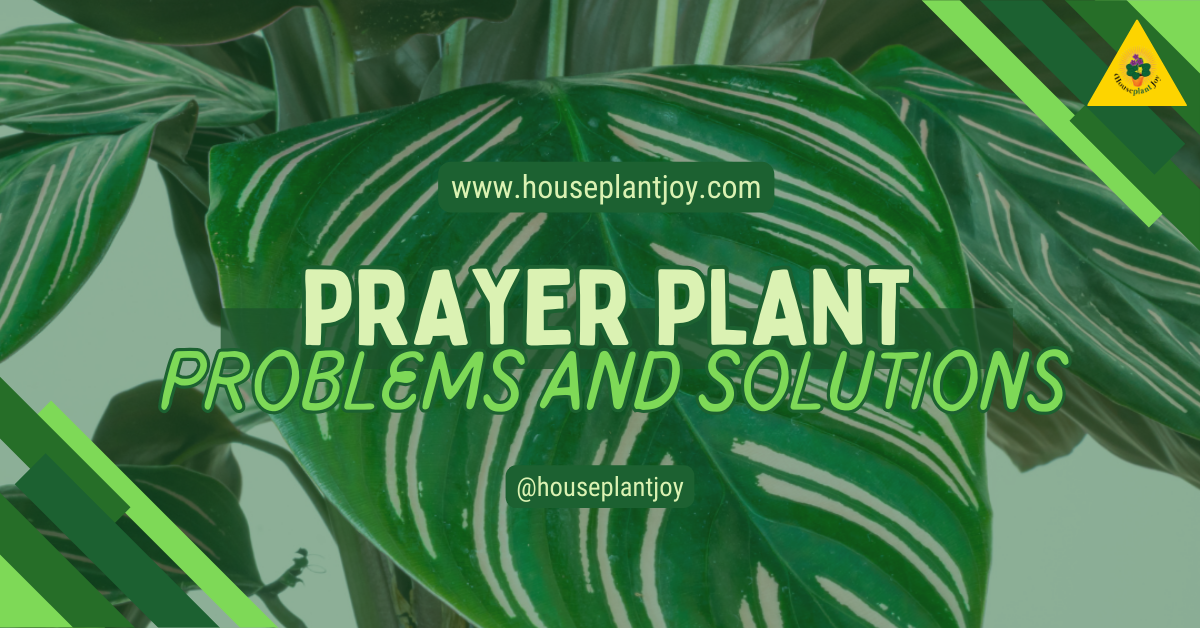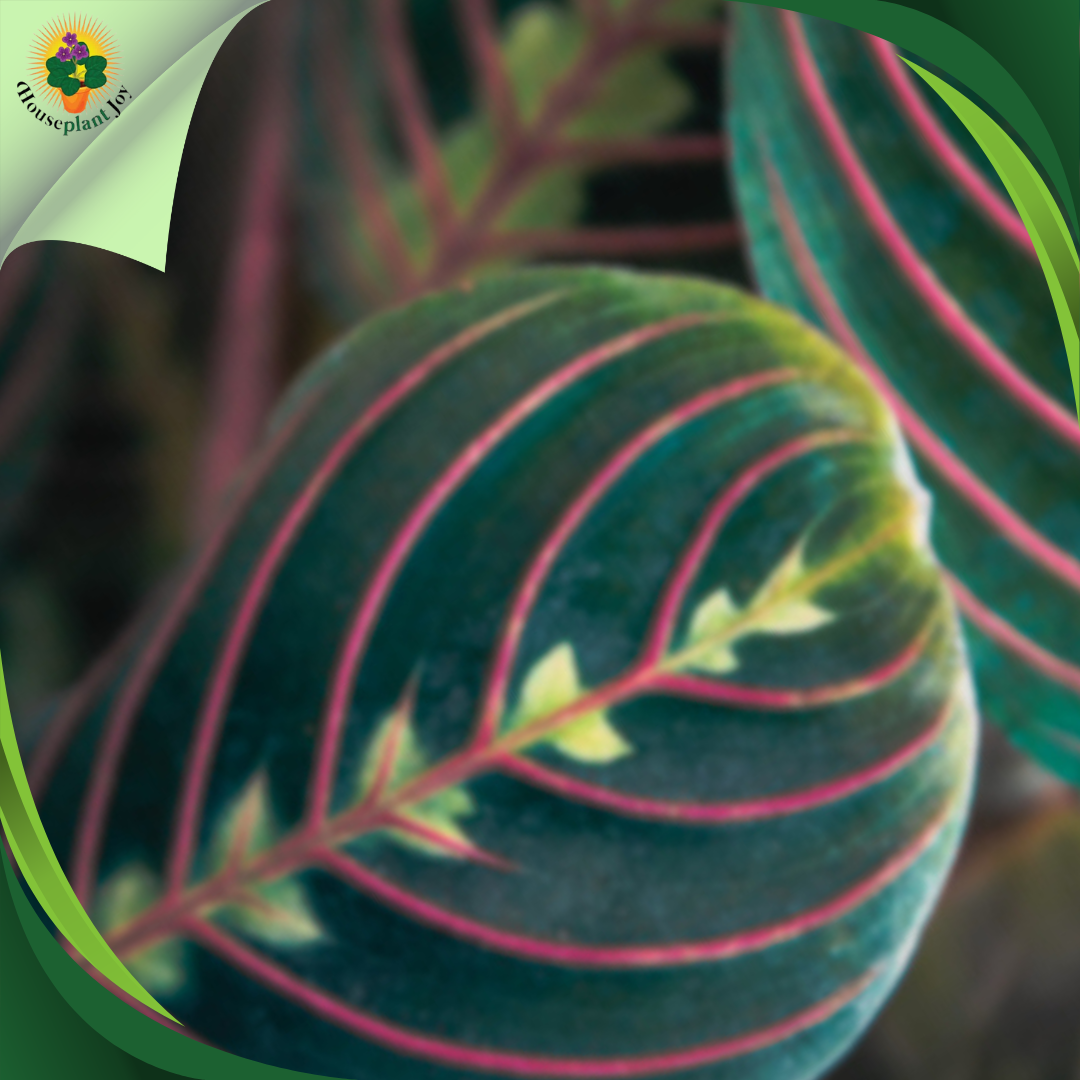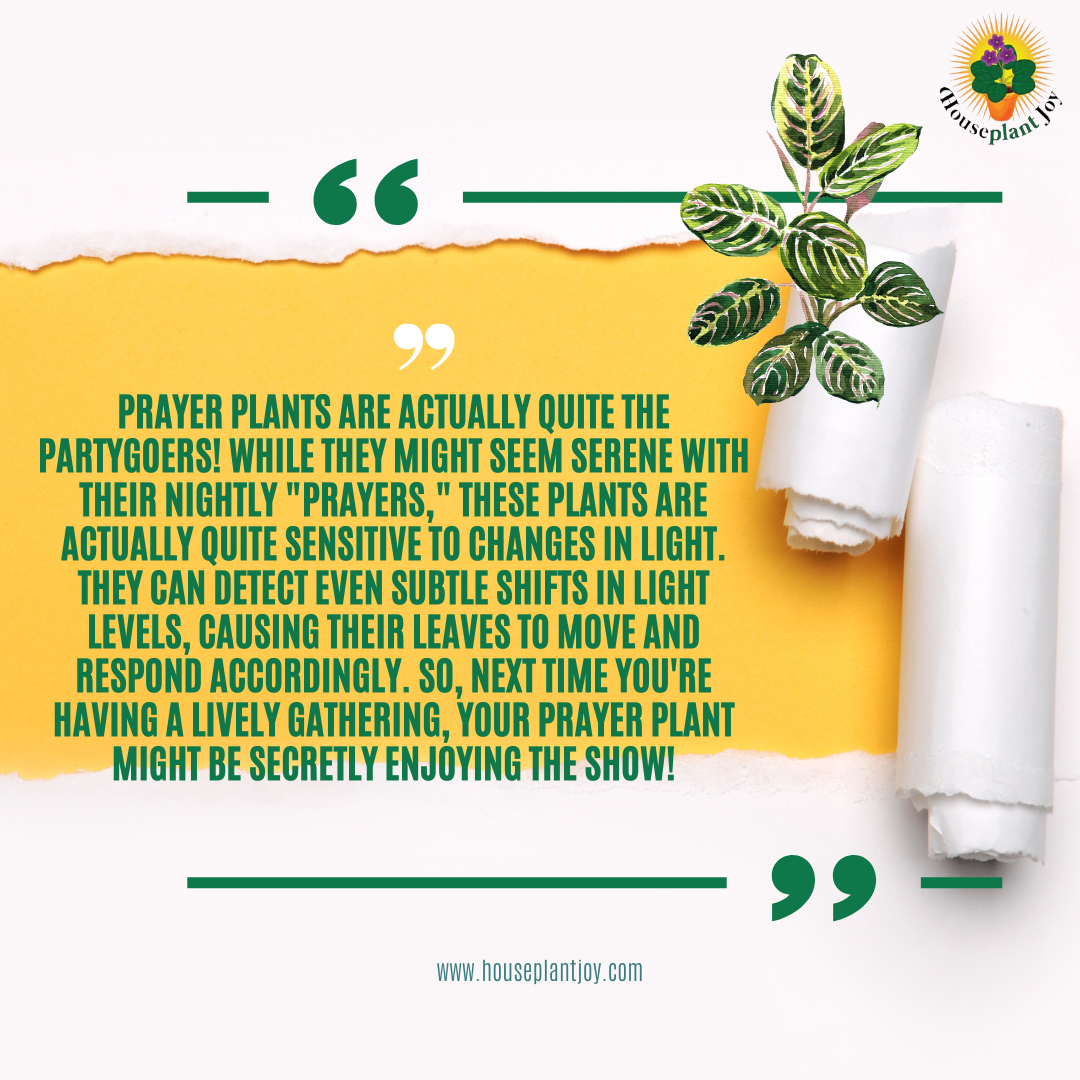HousePlantJoy is supported by our audience. When you purchase through one of our links, we may earn a small affiliate commission. As an Amazon Associate I earn from qualifying purchases. Your cost is not affected.
==================
Your prayer plant is acting up? Don’t worry, you’re not alone! These tropical beauties can be a bit diva-like, but fear not; we’re here to help. Let’s dive into the common issues your prayer plant might face and how to fix them. From brown tips to drooping leaves, we’ve got you covered. Let’s get your plant looking its best!
Prayer Plant Problems: Common Issues and Solutions
Prayer plants are beautiful houseplants known for their unique leaf patterns and movements. But like any plant, they can face challenges that may leave you scratching your head.
Common prayer plant problems include yellow leaves, brown edges, and wilting. These are often caused by improper watering, lighting, or humidity levels. By learning to spot these signs early, you can take quick action to help your plant recover. Many prayer plant issues are easy to fix with simple adjustments to your care routine.
Keeping your prayer plant healthy doesn’t have to be complicated. With the proper knowledge, you can prevent many problems before they start.
Let’s explore some common prayer plant issues and how to solve them so you can enjoy your lush, vibrant plant for years to come.
The Basics of Prayer Plant Care
Prayer plants need bright, indirect light to maintain their vibrant colors. Place them near a north-facing window or a few feet away from other windows. Water when the top inch of soil feels dry. These plants prefer high humidity, so mist them regularly or use a pebble tray.
Maintain temperatures between 60-80°F (15-27°C). Use well-draining potting soil and fertilize monthly during the growing season. Prune your prayer plant to encourage bushier growth and remove yellow or brown leaves.
Watch for common issues like brown leaf edges, indicating low humidity or overwatering. Yellowing leaves may signal nutrient deficiencies or too much direct sunlight.
Common Varieties
The Maranta leuconeura species includes several popular prayer plant varieties:
- Red Maranta: Features dark green leaves with red veins and pink stripes.
- Lemon Lime: Has bright green leaves with yellow splotches.
- Black: Displays dark purple-green leaves with silvery markings.
Calathea plants, close relatives of prayer plants, offer stunning foliage options:
- Calathea orbifolia: Large, round leaves with silvery stripes
- Calathea makoyana (Peacock plant): Pale green leaves with dark green ovals
These varieties all share similar care needs but may have slight differences in light or humidity preferences.
Signs of Watering Problems
Too much or too little water can harm your prayer plant. Wilting leaves often point to watering issues. If the soil feels dry and the leaves droop, your plant needs more water. Yellowish, soft leaves might mean you’re overwatering. Check the soil before watering. It should be slightly damp, not soaking wet or bone dry.
Brown, crispy leaf edges can also signal watering problems. This could mean your plant isn’t getting enough water or humidity. Try misting the leaves or using a pebble tray to boost moisture.
Identifying Light-Related Issues
Prayer plants need the right amount of light to thrive. Too much direct sunlight can cause leaf discoloration. Look for pale or bleached spots on the leaves.
If your plant isn’t getting enough light, you might notice:
- Slow growth
- Smaller leaves
- Weak stems
- Faded leaf patterns
If you see these signs, move your plant to a brighter spot. But remember, prayer plants prefer indirect light. Avoid placing them in direct sun to prevent leaf burn.
Recognizing Nutrient Deficiencies
Nutrient deficiencies can cause various issues in prayer plants. Yellow leaves with green veins often indicate an iron deficiency, which is called chlorosis.
Other signs of nutrient problems include:
- Stunted growth
- Pale or discolored leaves
- Leaf drop
If you suspect a nutrient deficiency, check your plant’s soil pH. Prayer plants like slightly acidic soil. A pH above 6.0 can make it hard for the plant to absorb iron and other nutrients.
Regular fertilizing can help prevent nutrient issues. Use a balanced, water-soluble fertilizer during the growing season. But be careful not to overfertilize, as this can damage your plant.
Overwatering Risks
Overwatering is a big threat to prayer plants. It can lead to root rot and fungal diseases. When soil stays too wet, roots can’t get enough air. This damages them and stops them from working well.
Signs of overwatering include:
- Yellow or brown leaves
- Soft, mushy stems
- Mold on the soil surface
- Foul smell from the pot
To avoid overwatering, check the soil before watering. Only water when the top inch feels dry. Make sure your pot has drainage holes. Empty any water in the saucer after 30 minutes.
Underwatering Symptoms
Underwatering can be just as harmful as overwatering. Prayer plants need consistent moisture. When they don’t get enough water, they show clear signs of stress.
Look out for these symptoms:
- Drooping or curling leaves
- Crispy, brown leaf edges
- Slow growth
- Dry, hard soil
If you notice these signs, water your plant right away. Give it a deep, thorough watering. Make sure water reaches all parts of the soil. You might need to water more often in hot, dry weather.
Best Watering Practices
Good watering habits keep prayer plants healthy. Water deeply but less often. This encourages strong root growth.
Here are some tips:
- Use room temperature water.
- Water until it runs out of the drainage holes.
- Let the top inch of soil dry between waterings.
- Check soil moisture every few days.
- Adjust watering based on season and growth.
Prayer plants also like humidity. Keep levels between 50% and 60%. You can use a humidifier or place a water tray near the plant. Grouping plants together also helps.
Ideal Light Conditions
Prayer plants thrive in bright, indirect light. Making them ideal for spots near north or east-facing windows where they can enjoy gentle morning sunlight without exposure to harsh afternoon rays.
To create the perfect environment, use sheer curtains to filter intense light. Aim to give your Prayer plant 12-14 hours of sunlight daily for optimal growth.
A light meter can help you check the light intensity and find the best spot in your home. While Prayer plants can adapt to lower light conditions, they will not flourish as well as they do in bright, indirect light.
Effects of Low Light
In low light conditions, Prayer plants may struggle, exhibiting slower growth and less vibrant colors. The leaves might become smaller and lose their distinctive patterns. Insufficient light can lead to nutritional deficiencies, making it difficult for the plant to produce chlorophyll. This results in pale or yellowing leaves.
To remedy this, move your plant to a brighter location. If natural light is limited, consider using grow lights to supplement the light your Prayer plant needs to stay healthy and vibrant.
Consequences of Too Much Light
While prayer plants need light, too much can be harmful. Direct sunlight can scorch the leaves, causing brown spots or crispy edges.
You may also notice the leaves curling or folding up, even during the day. This is the plant’s way of protecting itself from excess light.
If you see these signs, move your plant to a shadier spot. A location with filtered light or further from the window often works well. Remember, it’s easier to increase light than to repair sun damage.
Suitable Soil Mix
Prayer plants do best in soil that drains well but also holds some moisture. You can make a good mix with:
- 2 parts coconut coir or peat moss
- 1 part compost or potting soil
- 1 part perlite or sand
This mix gives roots to air and water without getting soggy. Prayer plants like acidic soil with a pH below 6.0. This helps them get iron and other nutrients. You can also buy pre-made mixes for tropical plants. Just make sure it’s light and drains well. Add some extra perlite if needed to improve drainage.
Repotting Frequency
You should repot your prayer plant every 1-2 years. Signs it’s time to repot include:
- Roots growing out of drainage holes
- Plant drying out faster than usual
- Slower growth or yellowing leaves
Spring is the best time to repot. This gives your plant the whole growing season to settle in. Don’t repot in winter when growth slows down. Only go up one pot size when repotting. Too big a pot can lead to overwatering problems.
Repotting Steps
Follow these steps to repot your prayer plant:
- Water the plant a day before repotting.
- Gently remove the plant from its old pot.
- Shake off excess soil and check the roots.
- Cut away any dead or rotted roots.
- Place fresh soil in the new pot.
- Set the plant in and fill around it with soil.
- Water lightly and place in a warm, shaded spot.
When repotting your Prayer plant, make sure not to plant it too deep. Maintain the soil line at the same level it was in its previous pot to prevent stress on the plant.
After repotting, avoid fertilizing for at least a month. This gives the roots time to settle and adjust to their new environment without the added stress of absorbing nutrients. Ensuring these steps will help your Prayer plant transition smoothly and continue to thrive.
Temperature and Humidity Requirements
Prayer plants need warm temperatures and high humidity to thrive. They prefer temperatures between 65°F and 85°F (18°C to 29°C). Your home’s average temperature is usually acceptable for these plants.
Keep your prayer plant away from cold drafts and air conditioning vents. Sudden temperature changes can stress the plant and cause leaf damage. Humidity is crucial for prayer plants. They love moist air, similar to their native tropical habitats. Aim for humidity levels above 50%.
Here are some ways to increase humidity:
- Use a pebble tray filled with water
- Group plants together
- Run a humidifier nearby
- Mist the leaves regularly
If the air is too dry, your prayer plant’s leaves may turn brown at the edges or tips. This is a sign that it needs more humidity. In winter, be extra careful. Heating can dry out the air in your home. Increase humidity efforts during colder months.
Prayer plants can face problems if temperature and humidity aren’t right. Watch for curling leaves or slow growth, which could mean the plant is too cold or the air is too dry. With the right temperature and humidity, your prayer plant will display vibrant, healthy leaves. It may even reward you with small, pretty flowers in the right conditions.
Common Pests
Spider mites are tiny pests that often attack prayer plants. You might see fine webbing on leaves or tiny specks moving around. Mealybugs are another issue, appearing as white, cottony masses on stems and leaves.
Thrips can also infest prayer plants. These tiny insects cause silvery patches on leaves. Aphids may cluster on new growth, sucking sap from the plant. To check for pests, often look closely at your plant’s leaves and stems. Pay attention to any changes in leaf color or texture.
Typical Diseases
Root rot is a common disease in prayer plants. It happens when the soil stays too wet. Leaves may turn yellow or brown, and the plant may look wilted.
Leaf spot diseases can cause dark or discolored areas on leaves. These spots may grow larger over time. Chlorosis, or yellowing leaves, can signal a nutritional problem. This often means the plant isn’t getting enough iron. Watch for any unusual changes in your plant’s appearance. Quick action can stop diseases from spreading.
Prevention and Treatment
Good care is critical to preventing pests and diseases. Water your plant correctly and avoid getting leaves wet. Use well-draining soil, and don’t overwater.
For pest control, try these steps:
- Wipe leaves with a damp cloth
- Use insecticidal soap or neem oil
- Spray with a mix of soap, oil, and water
To fight diseases:
- Improve airflow around your plant.
- Remove affected leaves promptly.
- Adjust watering habits if you suspect root rot.
Repot your plant every year or two. This helps refresh the soil and remove any hidden pests.
Pruning and Grooming
Pruning your prayer plant keeps it looking neat and healthy. You should trim your prayer plant 2-3 times a year to give it a fuller, bushier look.
Start by removing any dead, damaged, or diseased leaves. This improves the plant’s health and appearance. Use clean, sharp scissors or pruning shears to make clean cuts. When shaping your prayer plant, aim for a balanced look. Don’t remove more than 25% of the plant’s foliage at once.
Here are some tips for effective pruning:
- Sterilize your tools before and between cuts
- Cut just above a leaf node
- Remove any leggy or overgrown stems
- Trim off yellow or brown leaf edges
Pruning also encourages new growth. After trimming, you may notice your plant becoming fuller and more vibrant.
Remember to clean your prayer plant’s leaves regularly. Gently wipe them with a damp cloth to remove dust. This helps the plant photosynthesize better. If your prayer plant looks leggy or too large, don’t hesitate to cut it back. With proper care and regular grooming, your prayer plant will thrive and add beauty to your space.
Spring and Summer:
- Watering: Increase watering frequency as your plant enters its active growth phase. Water when the top inch of soil feels dry.
- Fertilizing: Feed every 2-4 weeks with a balanced fertilizer to support vigorous growth.
- Humidity: Maintain high humidity by misting the leaves or using a pebble tray. This helps prevent brown leaf tips.
Fall:
- Watering: Gradually reduce watering as the plant’s growth slows. Water only when the top 2 inches of soil are dry.
- Fertilizing: Stop fertilizing to allow the plant to prepare for its dormant period.
Winter:
- Watering: Further reduce watering. Only water when the top 2 inches of soil are dry.
- Placement: Move the plant away from cold windows to prevent leaf damage from drafts.
- Light: Ensure the plant continues to receive bright, indirect light to avoid leaf burn.
Pest Prevention:
- Watch for pests like spider mites, which thrive in dry conditions. Maintaining high humidity can help keep them at bay.
Dormancy:
- Prayer plants naturally go dormant in winter. Don’t be alarmed if growth slows down. This is normal; your plant will become more active again in spring.
Adjusting your care routine throughout the year can keep your Prayer plant thriving every season
Prayer Plant Problems and Solutions: How to Revitalize Your Prayer Plant
Understanding and addressing the common challenges that Prayer plants face is crucial for maintaining their health and vibrancy. These sensitive plants require a delicate balance of care, from managing light and water conditions to tackling pests and adapting to environmental changes.
Light Management:
Prayer plants thrive in bright, indirect light. Meaning, too much direct sunlight can scorch their leaves, whereas insufficient light can result in dull, lifeless foliage. Therefore, ensuring they receive the right amount of light is crucial. By doing so, you will maintain their vibrant colors and support steady growth.
Watering Practices:
Prayer plants prefer consistently moist soil; however, they are prone to root rot if overwatered. Therefore, finding the right watering schedule is crucial. Allow the top inch of soil to dry out between waterings to keep your plant healthy. Additionally, adjusting the watering frequency as the seasons change is essential for maintaining optimal soil conditions.
Humidity and Temperature Control:
These tropical plants thrive in high humidity and stable temperatures. Consequently, low humidity can lead to browning leaf edges, while sudden temperature changes can stress the plant. To avoid these problems, maintaining a consistent environment is crucial. By doing so, you will not only prevent these issues but also promote robust growth.
Pest Management:
Prayer plants can attract pests such as spider mites and mealybugs, particularly in dry conditions. Therefore, regularly inspecting your plant and maintaining high humidity levels will help prevent these infestations. However, if pests do appear, prompt treatment is essential to safeguard your plant’s health.
By taking a proactive approach to these care aspects, you can ensure that your Prayer plant not only survives but also thrives. As a result, you’ll be rewarded with its lush, vibrant foliage and dynamic leaf movements.
Is your Prayer plant acting up? Don’t worry! We’re here to help. Share your plant troubles with us, and we’ll work together to find a solution. Drop a comment below, and let’s get your green friend back on track! For more tips and expert advice, subscribe to our newsletter and join our community of plant enthusiasts. Let’s grow together!
Why are my Prayer Plant's leaves turning yellow?
Why is my Prayer Plant drooping?
How can you tell if a Prayer Plant is unhealthy?
What causes Prayer Plant leaves to curl and turn brown?
How do you revive a dying Prayer Plant?
How do you fix a leggy Prayer Plant?
Prune your plant to encourage bushier growth. Cut back long stems just above a leaf node.














